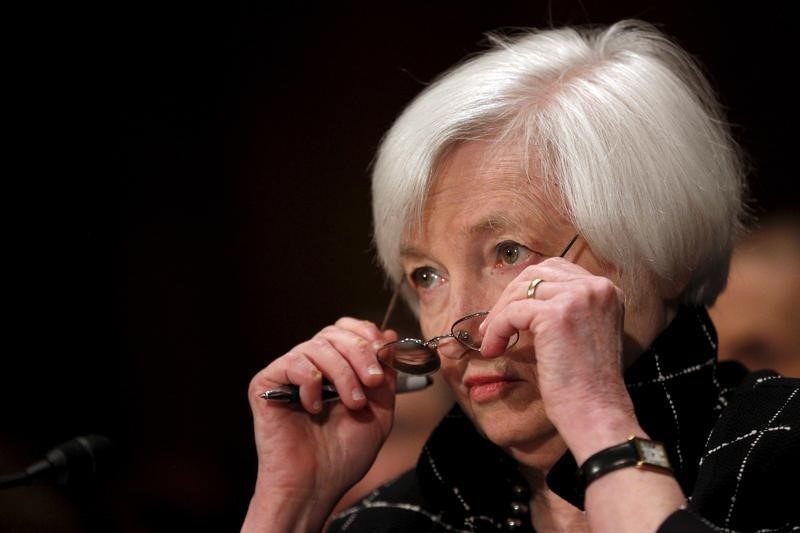Investing.com - Here are the top five things you need to know in financial markets on Friday, August 11:
1. Inflation data on tap
The Commerce Department will publish inflation figures for July at 8:30AM ET (12:30GMT) Friday. Market analysts expect consumer prices to ease up 0.2%, while core inflation is forecast to rise 0.2%.
On a yearly base, core CPI is projected to climb 1.7%. Core prices are viewed by the Federal Reserve as a better gauge of longer-term inflationary pressure because they exclude the volatile food and energy categories. The central bank usually tries to aim for 2% core inflation or less.
Rising inflation would be a catalyst to push the Fed toward raising interest rates in the months ahead and a higher-than-expected reading on Friday would help convince markets to up the odds for a rate hike in December.
Fed fund futures currently price in odds of an end-of-the-year increase at around only 40%.
2. North Korea tensions rule markets as earnings season fades
Tension between the U.S. and North Korea continued to rule markets as earnings season stateside came to a close.
In recent developments, U.S. President Donald Trump issued a fresh round of warnings, suggesting that his previous threat to unleash “fire and fury” may not have been “tough enough”.
North Korea “better get their act together or they’re going to be in trouble like few nations ever have been in trouble in this world,” he warned.
Concerns over the political standoff have taken center stage for global stocks even as the U.S. earnings season comes to a close.
Snap Inc (NYSE:SNAP) saw shares tank 15% in pre-market trade on Friday after the self-proclaimed camera company reported results that missed estimates on both the top and bottom line after the previous session’s close.
No S&P 500 firms were scheduled to report on Friday, though attention may focus on JC Penney (NYSE:JCP) as the last department store reports before the bell in what has been a busy week for earnings from brick and mortar retailers.
455 S&P companies have already released earnings for the second quarter reporting period with just 20 on tap for next week, including the likes of Wal-Mart (NYSE:WMT), Home Depot (NYSE:HD), Cisco Systems Inc (NASDAQ:CSCO), or Target Corporation (NYSE:TGT).
3. Global stocks continue downward trend over North Korea face-off
As the S&P 500 closed Thursday with its largest drop since May, its second biggest fall this year, as tensions between the U.S. and North Korea sparked risk-off appetite in global equities.
Earlier, Asian markets ended sharply lower as Trump increased the confrontational rhetoric with the Shanghai Composite ending 1.6% lower and South Korea’s Kospi down 1.7%. The Japanese stock market was closed for a holiday.
European shares were also hit by the political uncertainty, on track for their worst weekly decline of 2017. At 5:56AM ET (9:56GMT), the European benchmark Euro Stoxx 50 lost 0.80%, Germany’s DAX fell 0.43%, while London's FTSE 100 traded down 1.19%.
U.S. futures pointed to a continuation of investor caution, suggesting a lower open on Friday. At 5:56AM ET (9:56GMT), the blue-chip Dow futures fell 0.10%, S&P 500 futures declined 0.15% while the Nasdaq 100 futures traded down 0.30%.
4. Volatility spikes to post-election high, safe havens climb
Jitters over the face-off between Trump and North Korea saw volatility spike Friday to its highest level since the results of the U.S. presidential elections last November.
At 5:57AM ET (9:57GMT), the CBOE volatility index, known as the fear gauge, was last up around 5% at 16.86, after hitting an intraday high of 17.28.
Investors looking to take risk off the table fled to so-called safe haven assets, seen as more secure investments.
Gold continued to hold near a nine-week high on Friday as investors piled into the precious metal. Comex gold futures gained $3.41, or around 0.3%, to $1,293.41 a troy ounce by 5:59AM ET (9:59GMT).
Additionally, yields on core government debt fell as market participants looking for safety drove fixed income prices higher. Ten-year U.S. yields dropped about 2 basis points (bps) to 2.196% by 6:00AM ET (10:00GMT) while German equivalents fell 3 bps to 0.382%.
Safe haven currencies such as the yen and Swiss franc also saw buying interest, strengthening against the U.S. dollar.
5. Oil retreats 3% on oversupply worries
Oil prices moved lower Friday, on track for weekly losses of nearly 3%, on the back of persistent worries over the global supply glut as investors waited for weekly data on U.S. drilling activity.
The International Energy Agency (IEA) said on Friday that strong demand should help the market rebalance, but noted that OPEC's compliance with the agreed production cuts in July had fallen to 75%, the lowest since the cuts began in January.
The overall global oil supply rose by 520,000 barrels per day (bpd) in July to stand 500,000 bpd above year-ago levels, the IEA said in its monthly report.
Market participants will keep an eye on increasing U.S. shale production when Baker Hughes releases its most recent weekly rig count data later on Friday.
U.S. crude oil futures fell 0.76% to $48.22 at 6:01AM ET (10:01GMT), while Brent oil traded down 0.60% to $51.59.
